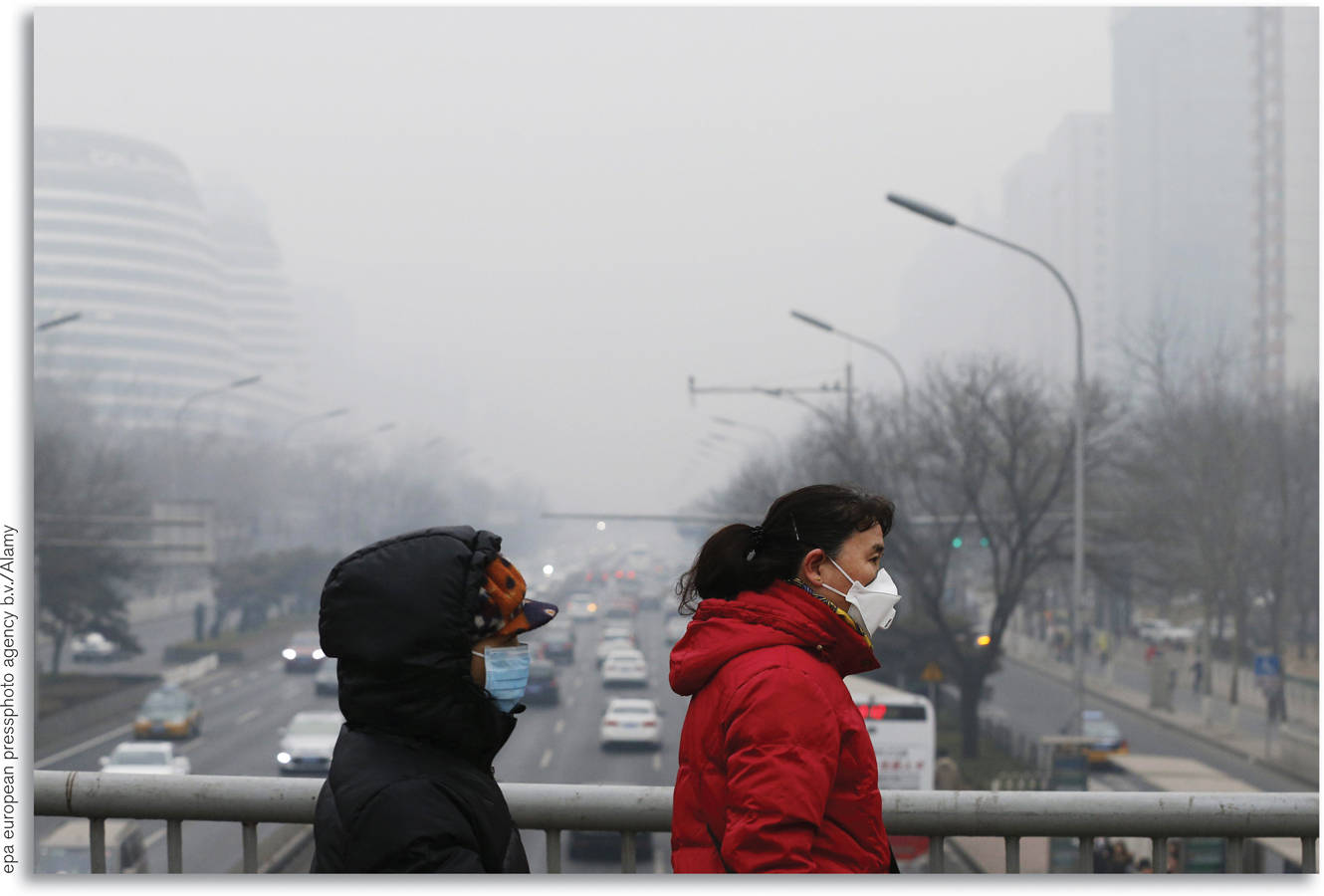Long-Run Economic Growth
17
 What You Will Learn in This Section
What You Will Learn in This Section
Why long-run economic growth is measured as the increase in real GDP per capita, how real GDP per capita has changed over time, and how it varies across countries
Why productivity is the key to long-run economic growth and how productivity is driven by physical capital, human capital, and technological progress
The factors that explain why long-run growth rates differ so much among countries
How growth has varied among several important regions of the world and why the convergence hypothesis applies to economically advanced countries
The question of sustainability and the challenges to growth posed by scarcity of natural resources and environmental degradation
AIRPOCALYPSE NOW

Rapid, uncontrolled economic growth has resulted in much higher living standards in China but at the cost of very high levels of pollution.
On January 16, 2014, reported the New York Times, “Some residents of Beijing woke up with splitting headaches. A curtain of haze had fallen across the city of more than 20 million. It was the first ‘airpocalypse’ of the year in the Chinese capital and nearby provinces.”
As the article suggested, severe air pollution—at levels that make the once-famous smog of Los Angeles (mostly gone now thanks to pollution regulations) seem mild by comparison—has become commonplace in China’s cities. This is, it goes without saying, a bad thing, and must be dealt with. But it is a byproduct of a very good thing: China’s extraordinary economic growth in the past few decades, which has raised literally hundreds of millions of people out of abject poverty. These newly enriched masses want what everyone wants if they can afford it: better food, better housing, and consumer goods—including, in many cases, cars. As recently as 1999 there were fewer than 15 million motor vehicles in China, barely 1 for every 100 people. By 2012 that number had risen to 240 million, and was still rising fast.
Unfortunately, the growth in China’s car population has run ahead of its pollution controls. And the result, combined with the emissions of the country’s burgeoning industry, is epochal smog.
Despite its troubling environmental problems, China has obviously made enormous economic strides over the past few decades. Indeed, its recent history is probably the world’s most impressive example to date of long-run economic growth—a sustained increase in output per capita. Yet despite its impressive performance, China is currently playing catch-up with economically advanced countries like the United States and Japan. It’s still a relatively poor country because these other nations began their own processes of long-run economic growth many decades ago—and in the case of the United States and European countries, more than a century ago.
Many economists have argued that long-run economic growth—why it happens and how to achieve it—is the single most important issue in macroeconomics. In this section, we present some facts about long-run growth, look at the factors that economists believe determine the pace at which long-run growth takes place, examine how government policies can help or hinder growth, and address questions about the environmental sustainability of long-run growth.
 What You Will Learn in This Section
What You Will Learn in This Section